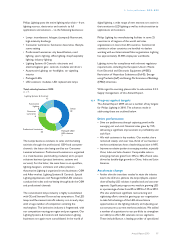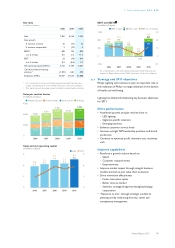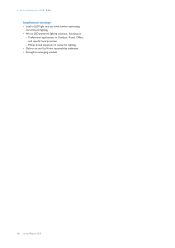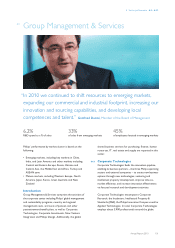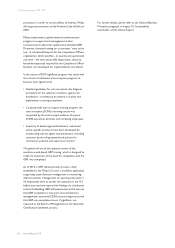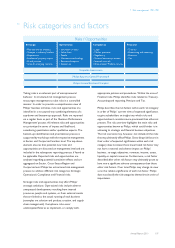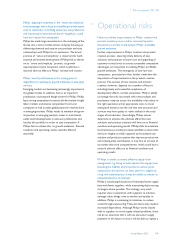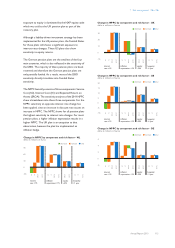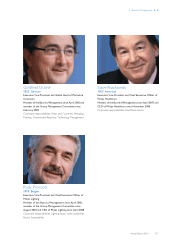Philips 2010 Annual Report Download - page 107
Download and view the complete annual report
Please find page 107 of the 2010 Philips annual report below. You can navigate through the pages in the report by either clicking on the pages listed below, or by using the keyword search tool below to find specific information within the annual report.
7 Risk management 7.2 - 7.2
Annual Report 2010 107
7.2 Risk categories and factors
Financial Compliance
• Legal
• Market practices
• Regulatory
• General business principles
• Internal controls
•
Data privacy / Product security
• Treasury
• Accounting and reporting
• Pensions
• Tax
Strategic Operational
Corporate Governance
Philips Business Control Framework
Philips General Business Principles
• Innovation process
• Value chain
• People
• Information technology
• Business disruption
• Reputation
• Macroeconomic changes
• Changes in industry/market
• Acquisitions
• Intellectual property rights
• Brand promise
• Growth emerging markets
Risks / Opportunities
Taking risks is an inherent part of entrepreneurial
behavior. A structured risk management process
encourages management to take risks in a controlled
manner. In order to provide a comprehensive view of
Philips’ business activities, risks and opportunities are
identified in a structured way combining elements of a
top-down and bottom-up approach. Risks are reported
on a regular basis as part of the ‘Business Performance
Management’ process. All relevant risks and opportunities
are prioritized in terms of impact and likelihood,
considering quantitative and/or qualitative aspects. The
bottom-up identification and prioritization process is
supported by workshops with the respective management
at Sector and Corporate Function level. The top-down
element ensures that potential new risks and
opportunities are discussed on management level and are
included in the subsequent reporting process, if found to
be applicable. Reported risks and opportunities are
analyzed regarding potential cumulative effects and are
aggregated on Sector, Cross-Sector/Region and
Corporate level. Philips has a structured risk management
process to address different risk categories: Strategic,
Operational, Compliance and Financial risks.
Strategic risks and opportunities may affect Philips’
strategic ambitions. Operational risks include adverse
unexpected developments resulting from internal
processes, people and systems, or from external events
that are linked to the actual running of each business
(examples are solution and product creation, and supply
chain management). Compliance risks cover
unanticipated failures to implement, or comply with,
appropriate policies and procedures. Within the area of
Financial risks, Philips identifies risks related to Treasury,
Accounting and reporting, Pensions and Tax.
Philips describes the risk factors within each risk category
in order of Philips’ current view of expected significance,
to give stakeholders an insight into which risks and
opportunities it considers more prominent than others at
present. The risk overview highlights the main risks and
opportunities known to Philips, which could hinder it in
achieving its strategic and financial business objectives.
The risk overview may, however, not include all the risks
that may ultimately affect Philips. Describing risk factors in
their order of expected significance within each risk
category does not mean that a lower listed risk factor may
not have a material and adverse impact on Philips’
business, strategic objectives, revenues, income, assets,
liquidity or capital resources. Furthermore, a risk factor
described after other risk factors may ultimately prove to
have more significant adverse consequences than those
other risk factors. Over time Philips may change its view
as to the relative significance of each risk factor. Philips
does not classify the risk categories themselves in order of
importance.


